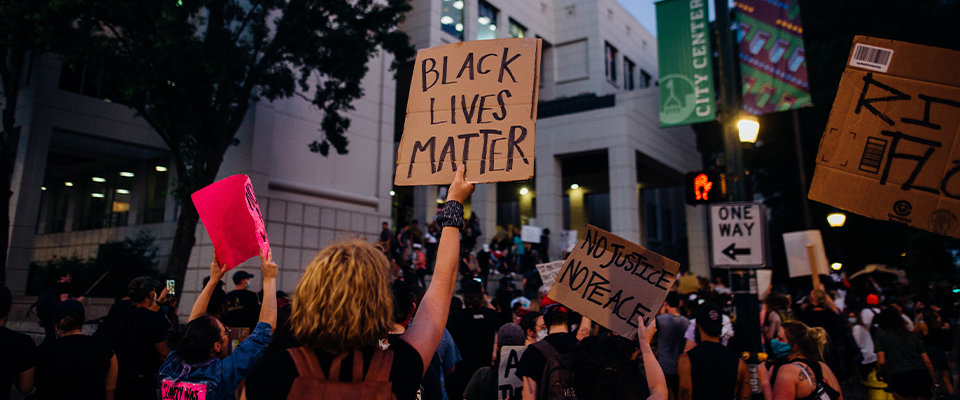If it wasn’t prescient, it at least embodied an eerie kind of synchronicity. A study led by a UC Berkeley graduate student finds that protestors tend to respond forcefully when confronted by police outfitted in military garb and employing hyper-aggressive tactics. Confrontation plays out on the streets of Ferguson, Missouri. QED.
Nick Adams and his colleagues at Berkeley’s Institute for Data Science crunched data gleaned from almost 200 Occupy protests held in various U.S. cities in 2011. Adams agrees his findings merely confirm what many considered obvious: Americans don’t like it when challenged by paramilitary police, and such encounters may induce even relatively mellow protestors to decidedly aggro behavior.
“But the value of this study is that it is based on evidence, not intuition,” he observes. “It identifies violence when it is strategic—that is, when police deliberately show up in military gear with an intention to raid or confront aggressively. And it tracks confrontation and response across timelines—who does what to whom, and when. We were able to identify those points when violence escalated, and we were able to determine the contributing factors.”
Not all protestors are incited to violence by police who garb themselves in camo and body armor, pack automatic weapons, and travel in armored personnel carriers, emphasizes Adams.
“For a certain number of protestors at any given event, paramilitary gear and tactics will have the effect police want,” he says. “Some people will be intimidated. They’ll back off. But for others—and they may be numerous—that kind of equipment and tactics is an incitement. It compels them to escalate the violence, to meet or exceed anything the police are doing.”
Many Americans reached the same conclusion after watching police respond to massive peaceful protests and some incidents of looting and violence in Ferguson, triggered by a white police officer’s fatal shooting of an unarmed black 18-year-old. Amid the criticism, President Obama has ordered a federal review of a military program that has funneled $5.1 billion worth of surplus military equipment to local police departments across the country.
“There is a big difference between our military and our local law enforcement, and we don’t want those lined blurred,” the President said. “That would be contrary to our traditions.”
The militarization of America’s community police has been traced back to the Reagan administration and its War on Drugs during the Reagan administration. That emphasis was only accelerated by the terrorist attacks of Sept. 11 and the Occupy protests. And now that cops have been thoroughly inculcated with the doctrine and lavished with oodles of surplus military gear, a significant number may be disinclined to change course and go back to the old-school policing paradigm: working a beat in uniform, talking to people in the neighborhoods, driving a car rather than traveling around in an APC, carrying a sidearm with a shotgun racked in the vehicle rather than toting light machine guns.
Police who defend the use of paramilitary gear note that they may be expected to operate in situations where they may be vastly outnumbered by crowds that are volatile, and in a society which gives its citizenry easy access to military-grade guns. In the case of Occupy Oakland protests, for example, Mayor Jean Quan was excoriated for both preventing the police from taking tough action to stop vandalism and looting, and for unleashing the police to use tear gas and rubber bullets against protesters exercising their First Amendment right to dissent.
“I do think some cops will resist changing, but others, most specifically police chiefs, are expressing real concerns about militarization and indicating a desire to return to community policing,” says Adams. “This study gives them the data they need to justify those moves.”
Adams recently had an email exchange with Norm Stamper, who was Seattle’s police chief during the 1999 World Trade Organization protests, popularly known as the Battle of Seattle—a seminal event that brought police militarization into the mainstream of citizen consciousness. Seattle’s police were widely viewed as excessively aggressive, and Stamper ultimately resigned.
In recent interviews, Stamper has criticized the paramilitary response of other police departments since, saying of the police response in Ferguson that had they set out to make matters worse, they couldn’t have done a better job.
“What happened in Seattle in 1999 was a police overreaction, which I presided over. It was the worst mistake of my career,” Stamper told Vox.com. “We used chemical agents, a euphemism for tear gas, against nonviolent and essentially nonthreatening protesters. The natural consequence of which are that we were the catalyst for heightened tension and conflict rather than peacekeepers, or for that matter even peacemakers. It’s a lesson, unfortunately, that American law enforcement in general has not learned.”
Adams describes Stamper as “a very thoughtful and intelligent guy,” and adds that many police chiefs are also. “They see there’s a problem, and they want to do something about it. And I do think a change of emphasis will benefit everyone. Citizens exercising their constitutional right to protest will be safer, and police officers will be better protected, both on the streets and in the courts. We’ll all sleep better.”
Adams and his team have more data to analyze, including material that measures the impact of community policing programs on protest management. But his co-researchers are in a financial bind.
“My position is paid by the university, but my team members have been supported by National Science Foundation grants,” says Adams. “We’ve recently learned that Congress is unlikely to continue funding political science research through the NSF, so three of our positions are on the chopping block.” In response, the group has launched a crowdfunding campaign through Berkeley-originated Indiegogo.



















